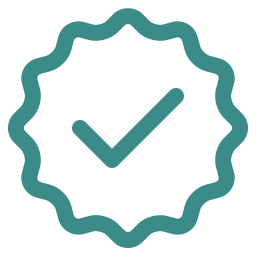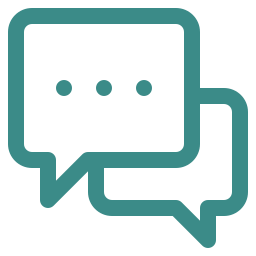Banish Back Pain: Empowering Your Core with Pilates to Find Relief from Aches and Tension
Are you tired of living with constant back pain? Do you long for relief from those nagging aches and tension?
Look no further than the Reformer for sale, the ultimate solution for strengthening your core and alleviating back pain.
Imagine a world where you can move freely, without fear of discomfort or limitations.
That world is within reach, and it starts with incorporating Pilates into your daily routine.
In this article, we will explore the causes of back pain and how strengthening your core can provide immense benefits.
We will delve into the importance of improving posture and targeting weak muscles through specific Pilates exercises.
Additionally, we will discuss how increasing flexibility can lead to pain-free movement.
Join us as we guide you on a journey towards achieving long-term back pain relief through the power of Pilates.
Say goodbye to constant discomfort and hello to a stronger, healthier body that allows you to fully enjoy life. Let's embark on this transformative path together!
Understanding the Causes of Back Pain
Understanding the causes of back pain is crucial in order to effectively alleviate the aches and tension that plague our daily lives.
Many factors contribute to this common ailment, including poor posture, sedentary lifestyles, muscle imbalances, and injury.
Pilates can be a highly effective method for addressing these issues and providing relief from lower back pain.
One of the main benefits of practicing Pilates for back pain on Pilates equipment for home is its focus on strengthening the core muscles.
The core includes not only the abdominal muscles but also the muscles of the back and hips.
By targeting these areas through specific exercises, Pilates helps to improve stability and support for the spine.
This can alleviate pressure on the lower back and reduce discomfort.
In addition to strengthening the core, Pilates also promotes proper alignment and posture.
Many people with back pain suffer from poor posture habits that exacerbate their symptoms.
Through mindful movement and body awareness, Pilates encourages individuals to adopt healthier postural habits both during exercise sessions and throughout their daily lives.
By addressing both core strength and posture, Pilates provides a comprehensive approach to alleviating back pain.
In our next section, we will explore in more detail how strengthening the core can further benefit individuals suffering from chronic discomfort.
The Benefits of Strengthening the Core
Improve your overall body stability and feel a sense of empowerment by targeting the central powerhouse of your body.
Strengthening the core through the use of M3K+ MegaFormer Pilates is an effective way to achieve back pain relief, as it focuses on developing the deep muscles in the abdomen, pelvis, and lower back.
Here are four benefits of strengthening the core:
- Enhanced spinal support
A strong core helps stabilize and support the spine, reducing strain on the back muscles and promoting proper alignment.
- Improved posture
Strengthening the core muscles encourages better posture by pulling the shoulders back, aligning the spine, and preventing slouching.
- Increased flexibility
Regular Pilates exercises on an Align Pilates promote flexibility in both major muscle groups and smaller stabilizing muscles, leading to an improved range of motion and reduced stiffness.
- Reduced aches and tension
By strengthening the core, you can alleviate common sources of back pain such as tightness in hip flexors or weak abdominal muscles that contribute to imbalances.
By incorporating Pilates into your routine for back pain relief, you can not only strengthen your core but also improve your overall posture.
This will set a solid foundation for subsequent steps towards achieving long-lasting relief from back pain.
Improving Posture for Back Pain Relief
Focusing on improving your posture can effectively relieve discomfort and promote a healthier back.
Good posture is essential for maintaining the natural alignment of the spine and reducing strain on the muscles and ligaments.
When we hunch or slouch, our core muscles become weak, leading to imbalances that contribute to back pain.
Pilates for back pain relief emphasizes strengthening the core, including the muscles in your abdomen, lower back, and pelvis.
These exercises target the deep stabilizing muscles that support proper posture.
Improving posture through Pilates involves a combination of exercises that focus on spinal alignment, body awareness, and muscle balance.
By practicing these techniques regularly, you can correct postural imbalances and relieve tension in your neck, shoulders, and lower back.
Additionally, Pilates helps lengthen tight muscles while simultaneously strengthening weak ones.
Maintaining good posture not only reduces back pain but also enhances overall well-being. Improved alignment brings increased energy levels, better breathing patterns, and enhanced body confidence.
So let's dive into targeting weak muscles with Pilates exercises to further strengthen our core and alleviate any residual discomfort from poor posture.
Targeting Weak Muscles with Pilates Exercises
To effectively target weak muscles and improve your posture, focus on engaging your deep stabilizing muscles through a variety of Pilates exercises on a Private Pilates Reformer.
Pilates for back pain relief is not just about strengthening the core but also about targeting specific weak muscles that contribute to poor posture and discomfort.
By incorporating these exercises into your routine, you can alleviate aches and tension while building strength.
Here are four key Pilates exercises to help you target weak muscles:
- Pelvic curls
This exercise engages the deep abdominal muscles and glutes, promoting stability in the pelvis and lower back.
- Side leg lifts
By focusing on the outer hip muscles, this exercise helps to balance muscle strength around the hips, reducing strain on the lower back.
- Spine twists
These movements engage the obliques and back muscles, helping to improve spinal mobility and strengthen the core.
- Bridge pose
This exercise activates the hamstrings, glutes, and deep abdominals, providing support for the spine while improving overall posture.
By incorporating these targeted exercises into your routine regularly, you can strengthen weak muscles that contribute to back pain while improving your overall posture.
In our next section, we will explore how increasing flexibility through Pilates can further enhance pain-free movement.
Now let's delve into techniques for increasing flexibility for pain-free movement.
Increasing Flexibility for Pain-Free Movement
Increasing flexibility for pain-free movement is a key focus in Pilates for back pain relief.
By targeting tight muscles and improving overall flexibility in the lower back region, we can alleviate aches and pains while improving our range of motion.
One effective Pilates exercise for increasing flexibility is the Cat-Camel Stretch.
This exercise involves arching and rounding the back in a controlled manner to mobilize the spine and release tension in the lower back area, you can do this on a microformer.
Another beneficial exercise is the Supine Spinal Twist, which helps stretch out tight muscles along the spine.
Incorporating these Pilates exercises into your daily routine can make a significant difference in reducing back pain and improving flexibility.
With consistent practice, you will notice increased mobility and ease of movement throughout your day-to-day activities.
Next, we will explore how to seamlessly incorporate Pilates into your daily routine without disrupting your schedule or lifestyle.
Incorporating Pilates Into Your Daily Routine
Incorporating Pilates exercises into your daily routine can seamlessly enhance the fluidity and ease of movement in your everyday activities, allowing you to gracefully glide through each day.
When it comes to back pain relief, strengthening the core is crucial.
By incorporating Pilates into your daily routine, you can target those deep abdominal muscles that support your spine and help alleviate aches and tension.
One way to incorporate Pilates into your daily routine is by starting with simple exercises that focus on engaging the core.
These can include exercises like pelvic tilts, where you lie on your back with knees bent, and gently tilt the pelvis up towards the ceiling while engaging the core muscles.
Another exercise is the bridge pose, where you lie on your back with your knees bent and slowly lift your hips off the ground while squeezing the glutes.
As you become more comfortable with these exercises, you can gradually increase their intensity by adding resistance bands or using Pilates equipment such as a stability ball or foam roller.
Additionally, taking short breaks throughout the day to perform quick Pilates stretches or movements can help keep your body active and prevent stiffness.
By incorporating Pilates into your daily routine, you can strengthen your core muscles and improve overall flexibility.
This will not only help alleviate back pain but also allow for pain-free movement in all aspects of life.
In the next section, we will explore how achieving long-term back pain relief with Pilates goes beyond just incorporating it into your daily routine.
Achieving Long-Term Back Pain Relief with Pilates
Achieving long-term relief from back pain is a journey that can be enhanced through the consistent practice of Pilates exercises.
Pilates for back pain relief focuses on strengthening the core muscles, which play a crucial role in supporting the spine and maintaining proper alignment.
By engaging these muscles regularly, you can alleviate aches and tension in your back.
To enjoy the benefits of Pilates for back pain relief, here are some key points to keep in mind:
- Consistency is key
Regularly practicing Pilates exercises on a Private Pilates Cadillac Reformer will help strengthen your core and improve posture over time.
Aim for at least two to three sessions per week to experience long-term results.
- Start slow and progress gradually
It's important to listen to your body and avoid pushing yourself too hard, especially if you're new to Pilates or have underlying conditions.
Begin with beginner-level exercises and gradually increase intensity as your strength improves.
- Seek professional guidance
Working with a certified Pilates instructor who specializes in back pain relief can be highly beneficial.
They can customize a program tailored to your specific needs and ensure proper form and technique.
By incorporating these strategies into your routine, you can maximize the effectiveness of Pilates for long-term back pain relief.
Remember, consistency combined with proper guidance will lead you towards a stronger core, improved posture, and ultimately reduced back pain.
Frequently Asked Questions
Can Pilates completely cure back pain?
Pilates can significantly reduce back pain by strengthening the core muscles and promoting better alignment.
While it may not completely cure all cases of back pain, it is an effective method for finding relief and improving overall spinal health.
Is Pilates suitable for people with severe back injuries or conditions?
Pilates can be suitable for people with severe back injuries or conditions, but it's important to consult a healthcare professional first.
With proper modifications and guidance, Pilates can help strengthen the core and provide relief from back pain.
How long does it take to see results from Pilates for back pain relief?
Results from Pilates for back pain relief can vary depending on the individual.
However, with consistent practice, many people start noticing improvements within a few weeks.
It is important to consult with a qualified instructor and follow a tailored program for maximum benefits.
Can Pilates worsen back pain if not done correctly?
Yes, if not done correctly, Pilates can worsen back pain.
Proper form and technique are crucial for preventing injury and maximizing the benefits of Pilates.
It's important to work with a certified instructor to ensure safe and effective practice.
Are there any specific Pilates exercises that should be avoided for back pain relief?
To find relief from back pain through Pilates, it's important to avoid certain exercises.
Moves that involve excessive bending or twisting of the spine should be skipped, as they can aggravate existing pain and discomfort.
Conclusion
In conclusion, incorporating Pilates into our daily routine can be a game-changer for those suffering from back pain.
By strengthening our core and improving posture, we can alleviate aches and tension that may have plagued us for years.
Just like a sturdy foundation supports a magnificent skyscraper, a strong core supports our entire body, allowing us to move with grace and ease.
So let's embrace the power of Pilates and bid farewell to back pain once and for all!




